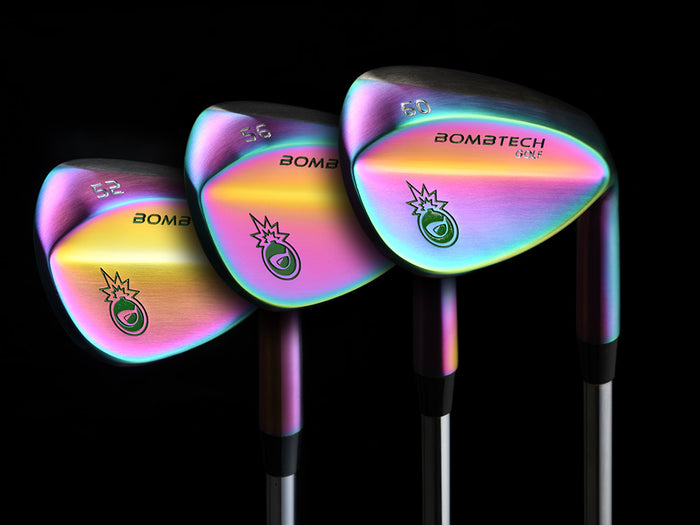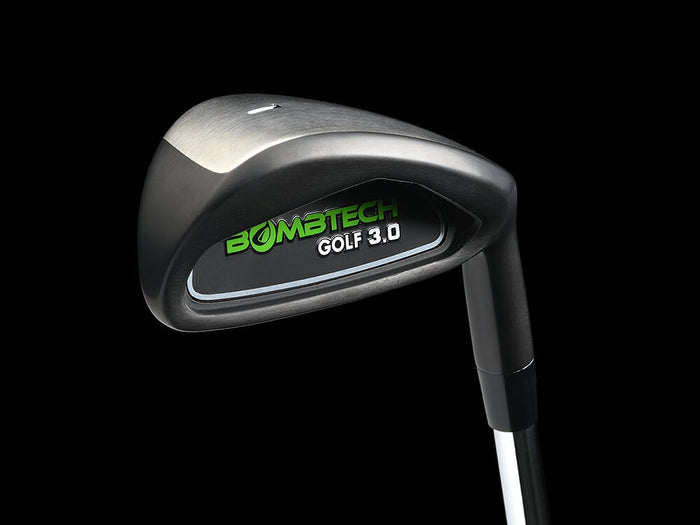Few things are as important for a golfer's success as the way they grip their clubs. After all, your grip is your main and only connection to your golf clubs. Knowing how hard you should squeeze the handle, learning the various grip styles, and understanding how weak, neutral, and strong grip positions interact with faster or slower swing speeds can make or break your game.
In an effort to help high- and low-handicap golfers alike improve as fast as possible, we've prepared 5 tried-and-true tips on how to develop a better golf grip. Read on to learn more.
How do I make my golf grip better?
If your grip is poor, your swing and stance will follow suit, greatly diminishing your power, accuracy, consistency, and enjoyment of the game. Since changing your grip after you've already gotten accustomed to it can be difficult, it's strongly advised that you learn the proper techniques as early as possible.
Here are 5 ways to develop a better golf grip:
1. Don't squeeze too hard
While your golf club shouldn't come flying out of your hands the moment you increase your swing speed a little, you also shouldn't be clutching it like your life depends on it. Too much tension is not only bad for your swing, but also for your hands, wrists, and fingers as well.
If you can see the tension in your hands while you're gripping the club, or if your hands feel sore the day after playing golf, you probably need to loosen your grip a bit.
2. Don't try to reinvent the wheel
The three standard golf club grips are called that for a reason. Whether you have faster or slower swing speeds, the overlap, interlock, and 10-finger grips have been shown time and time again to offer the most favorable results. Here's a quick breakdown:
Overlap
This common grip is called that because the pinky finger of the player's right hand overlaps the pointer finger on their left hand and rests over the crease between the middle and pointer fingers.
Interlock
When using this popular grip, the pinky finger on your right hand should interlock (go between) your middle and pointer fingers on your left hand.
10-finger
Also known as the "baseball grip", this grip requires the player to keep all 10 of their fingers on the club, without any of them interlocking or overlapping. Due to having smaller hands, the majority of junior golfers begin with this grip.
3. Use the same grip for (most) golf clubs
Some players use different grips for different clubs. Unless you play at a very high level, we advise against doing this. Find a single grip that works well for you and use it with all of your golf clubs. At the end of the day, consistency is always king.
Putting is the only exception to this rule. While there are some fundamentals when it comes to gripping a putter (for instance, the hands should be opposing one another), creativity can really go a long way here. The better it rolls the ball, the more you should use it. Here are two things you can try:
- Switch the hands around for a cross-handed grip. Instead of holding your right hand below your left hand, reverse it.
- Change how many fingers are overlapping. Play around with 3, 2, 1, and no overlapping fingers and see what works best for you in specific situations.
4. Get an expert opinion
Although private lessons can be costly, it's often well worth your while to invest in 1-2 sessions with a coach. Use this opportunity to have them assess your fundamentals and provide an expert opinion on your grip.
If getting professional lessons isn't possible, you can also try to find a seasoned player and ask them for advice. Golfers enjoy talking about golf and offering tips to one another, so it shouldn't be too hard to find an experienced player or two and have them take a look at your grip.
5. Don't rush things
It takes a lot of time and practice to really get used to a particular grip. Making adjustments can feel uncomfortable and awkward at first, especially if you're fundamentally changing your gripping technique.
That's why it's highly advised that you make all your adjustments while on the driving range, where you can practice your new grip to your heart's content without having to worry about missing your shots or sending the ball into the undergrowth.
Refrain from trying to tweak your grip during an actual match, as this tends to result in high scores and a lot of frustration.
Who makes & sells the best golf clubs for players with a slower swing speed?
As any experienced golfer will tell you, you can only improve so much until you get to the point where cheap, entry-level golf clubs for slower swing speeds are no longer cutting it. The good news is, BombTech Golf makes and sells high-quality clubs and other golfing equipment for golfers of all skill levels.
Since all of our products are sold directly online, we're able to offer more favorable prices to our customers without having to make any compromises on quality. We're so confident you'll enjoy our products that we offer a 60 day on-course guarantee. If you don't love them, simply ship them back and we'll take care of the details.
We're also passionate about promoting the game of golf and providing useful information to low- and high-handicappers alike via our blog. Whether you're looking for tips on how to get more pars, how to take your pre-shot routine to the next level, or how to stop shanking with your irons, we've got you covered. We've even written a comprehensive two-part guide on how to go over the score of 100 in golf.
Contact us today or start browsing our webshop to check out our selection of golf clubs for faster and slower swing speeds, as well as the other items we have on offer.





